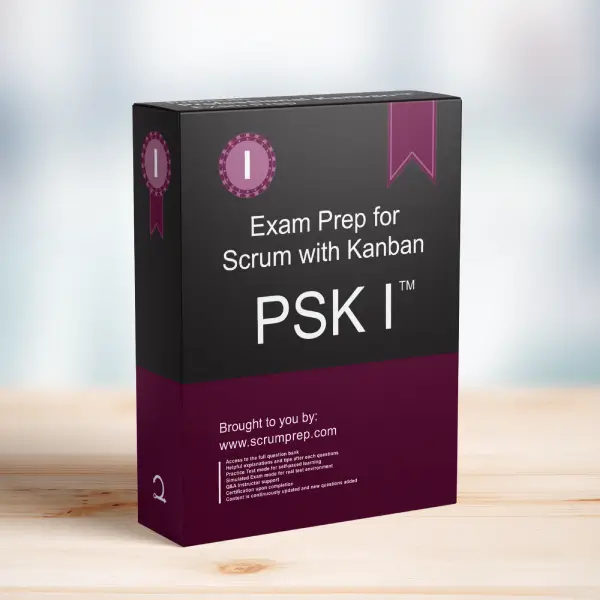Elements of Scrum as Forms of Work in Progress (WIP) Limits
Understanding which elements of the Scrum framework act as WIP limits is essential for effectively managing workflow and ensuring team efficiency.
Exam Question
What element of the Scrum framework or supporting practices is a form of the Work in Progress (WIP) Limit?
(choose the best answer)
A. The Product Backlog.
B. There is no such element in the Scrum framework.
C. The Sprint Backlog.
D. Burndown chart.
E. Definition of Done.
F. Sprint Goal.
Correct Answer
C. The Sprint Backlog.
Explanation
Correct Answer
C. The Sprint Backlog:
The Sprint Backlog serves as a form of Work in Progress (WIP) limit within the Scrum framework. It contains the set of Product Backlog items that the team commits to working on during a Sprint. This predefined list of tasks helps ensure that the team does not take on more work than they can handle within the Sprint, thus acting as a WIP limit. The Sprint Backlog helps manage the team’s capacity and maintains focus on completing the committed items before starting new work.
Why the Other Options Are Less Effective
A. The Product Backlog:
The Product Backlog is a prioritized list of all desired work on the product. It does not limit the work in progress but rather provides a pool of potential work items for future Sprints.
B. There is no such element in the Scrum framework:
This is incorrect because the Sprint Backlog acts as a WIP limit by defining the scope of work for a specific Sprint.
D. Burndown chart:
The Burndown chart is a tool for tracking progress toward completing work in the Sprint but does not limit the amount of work in progress.
E. Definition of Done:
The Definition of Done sets quality standards for completed work but does not directly limit the amount of work the team is undertaking at any given time.
F. Sprint Goal:
The Sprint Goal provides a high-level objective for the Sprint, guiding the team’s efforts, but it does not limit the work in progress directly.
Importance of WIP Limits
- Focus: WIP limits help the team focus on completing current tasks before taking on new ones.
- Efficiency: By limiting the amount of work in progress, teams can reduce context switching and increase efficiency.
- Predictability: WIP limits contribute to more predictable delivery times and better resource management.
Effective Practices for Managing WIP in Scrum
- Sprint Planning: During Sprint Planning, the team selects a manageable amount of work for the Sprint, effectively setting a WIP limit.
- Daily Scrum: Regularly review progress and adjust the plan to stay within the WIP limits set by the Sprint Backlog.
- Sprint Review: Assess the completed work and discuss any deviations from the planned WIP, using insights to improve future Sprint planning.
Relevance to the PSK I Exam
Understanding the role of the Sprint Backlog as a WIP limit within Scrum is crucial for the PSK I exam. It demonstrates knowledge of how Scrum practices support effective workflow management.
Key Takeaways
- The Sprint Backlog acts as a WIP limit within the Scrum framework by defining the scope of work for the Sprint.
- WIP limits help maintain focus, increase efficiency, and improve predictability.
- Effective Sprint Planning and regular reviews are essential for managing WIP in Scrum.
Conclusion
The Sprint Backlog serves as a form of Work in Progress (WIP) limit within the Scrum framework, helping teams manage their capacity and maintain focus on completing committed work. For more information on preparing for the PSK I exam, visit our Professional Kanban PSK I™ Exam Prep.



